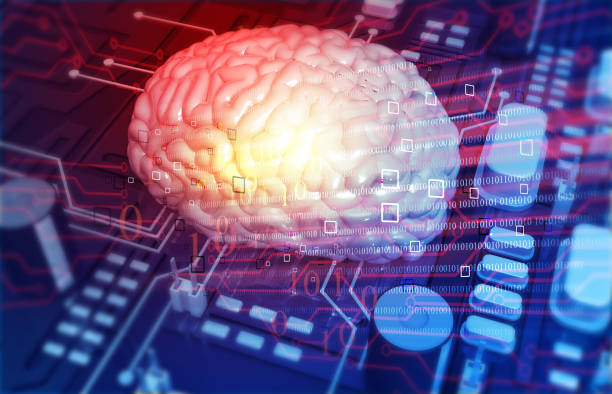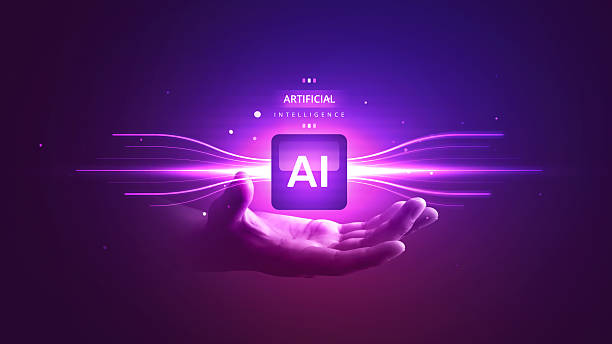### What is Artificial Intelligence and What Are Its Applications?

Artificial Intelligence (#ArtificialIntelligence), or AI, is a branch of computer science that seeks to build machines that can perform tasks that typically require human intelligence.
These tasks include learning, problem-solving, pattern recognition, and natural language understanding.
Artificial Intelligence is currently used in many industries, including medicine, finance, transportation, and entertainment.
The main goal of developing Artificial Intelligence is to create systems that are capable of imitating and even surpassing human cognitive abilities.
These systems analyze data and make decisions using complex algorithms and models.
In general, the goal of AI is to increase efficiency, accuracy, and speed in performing various tasks.
One of the important applications of Artificial Intelligence is in pattern recognition, which allows machines to identify and categorize images, sounds, and other types of data.
This capability is very valuable in areas such as facial recognition, voice recognition, and medical image analysis.
Also, Natural Language Processing (NLP) is another important branch of AI that enables machines to understand and interact with human language.
Are you tired of having visitors to your online store but no sales? Rasaweb solves your main problem with professional online store designs!
✅ Significant increase in sales with targeted design
✅ Seamless user experience for your customers
⚡ Get a free consultation!
Types of Artificial Intelligence: A Closer Look
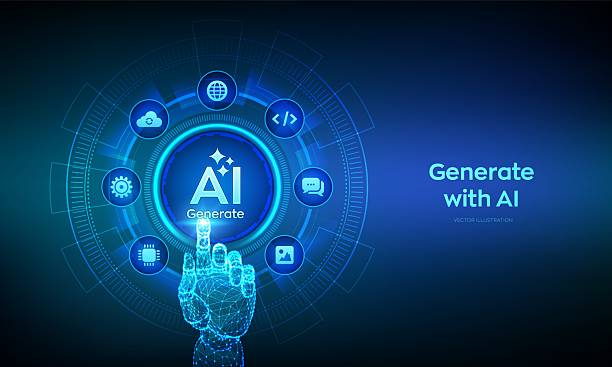
Artificial Intelligence can be divided into different categories based on their abilities and functions.
One of these classifications, based on mental abilities, divides them into Narrow AI and General AI.
Narrow AI is designed to perform a specific task and performs well in that area, but is not capable of doing other tasks.
For example, a facial recognition system or a product recommendation algorithm in an online store are examples of Narrow AI.
In contrast, General AI (AGI) refers to a system that can perform any intellectual task that a human is capable of doing.
AGI is still in the early stages of development, and achieving it is one of the long-term goals of AI researchers.
Another categorization is based on how the system learns and performs, which includes Supervised Learning, Unsupervised Learning, and Reinforcement Learning.
Each of these methods is suitable for solving specific problems and is used in various applications.
Machine Learning: The Foundation of Artificial Intelligence
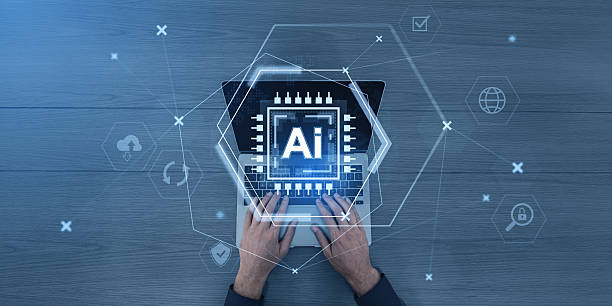
Machine Learning is an important subfield of artificial intelligence that allows machines to learn from data and improve their performance without explicit programming.
In fact, instead of giving machines precise instructions for performing a task, they are given data to learn the patterns and relationships within them.
Artificial Intelligence then uses this information to make predictions or decisions in new cases.
Machine learning is divided into three main categories: supervised learning, unsupervised learning, and reinforcement learning.
In supervised learning, machines are given labeled data, meaning each piece of data has a correct answer.
The machine learns from this data to find the relationship between the data and the correct answers and can predict the correct answers for new data.
In unsupervised learning, data is given to the machine without labels, and the machine must automatically discover patterns and structures in the data.
Reinforcement learning also allows machines to learn through trial and error, so that the machine operates in a specific environment and adjusts its behavior based on the feedback it receives to achieve the desired goal.
| Learning Algorithm | Application |
|---|---|
| Linear Regression | Predicting house prices |
| Decision Tree | Diagnosing diseases |
| Neural Networks | Image recognition |
Neural Networks Inspired by the Human Brain
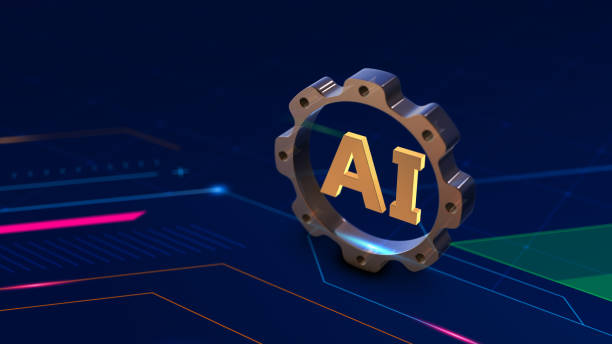
Neural Networks are computational models that are inspired by the structure and function of the human brain.
These networks consist of a large number of nodes (or neurons) that are connected in layers.
Each node receives an input, processes it, and produces an output.
This output is sent to other nodes in subsequent layers.
Artificial Intelligence This process allows the networks to learn complex patterns and perform tasks such as image recognition, voice recognition, and language translation.
Deep Neural Networks are a type of neural network that has a large number of layers.
These networks are capable of learning very complex patterns and perform better than traditional neural networks in many AI applications.
For example, deep neural networks are widely used in facial recognition, speech recognition, and natural language processing.
Do you know that a weak company website takes away many opportunities from you every day? Solve this problem forever with professional company website design by Rasaweb!
✅ Create a powerful and reliable image of your brand
✅ Attract targeted new customers and increase sales
⚡ [Get a free website design consultation]
Natural Language Processing: A Bridge Between Humans and Machines
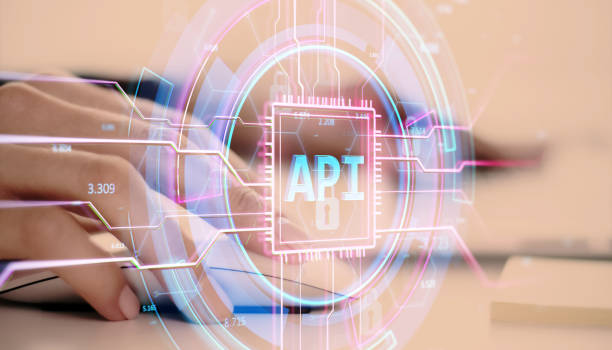
Natural Language Processing (NLP) is a branch of Artificial Intelligence that allows machines to understand, interpret, and generate human language.
This branch includes techniques and algorithms that allow machines to analyze texts, extract their meaning, and answer questions.
Artificial Intelligence NLP is used in various applications including machine translation, sentiment analysis, and chatbots.
One of the main challenges in NLP is ambiguity in natural language.
Human language often has words and phrases that can have different meanings, depending on the context and how they are used.
To solve this problem, NLP uses various techniques such as syntactic parsing, semantics, and context analysis to determine the precise meaning of the text.
Also, Artificial Intelligence uses large language datasets to train models that are capable of understanding and generating natural language.
Applications of Artificial Intelligence in Everyday Life

Artificial intelligence is currently present in many aspects of our daily lives, even if we don’t realize it.
Common applications include recommendation systems in online stores, facial recognition on smartphones, and voice assistants like Siri and Alexa.
Artificial Intelligence also plays an important role in self-driving cars, fraud detection in financial transactions, and disease detection in medical images.
In the future, it is expected that AI applications will become more widespread and have a greater impact on our lives.
For example, Artificial Intelligence can significantly increase efficiency and quality in education, healthcare, and manufacturing.
Also, artificial intelligence can help solve global problems such as climate change, poverty, and infectious diseases.
Challenges and Concerns Related to Artificial Intelligence
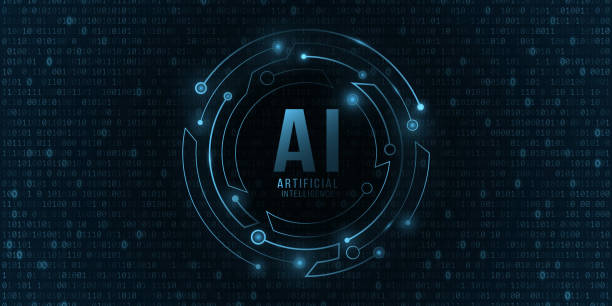
Despite the high potential of Artificial Intelligence, there are also challenges and concerns related to it.
One of these concerns is the impact of AI on the labor market.
With the automation of many tasks by machines, there is a possibility of job losses for many people.
Also, there are concerns about the unethical use of Artificial Intelligence, such as the construction of automated weapons and discrimination in algorithms.
To address these challenges, policymakers, researchers, and industry leaders need to work together to develop laws and regulations that ensure responsible and ethical use of artificial intelligence.
Also, investment in education and retraining of the workforce to adapt to changes resulting from automation is essential.
| Challenge | Solution |
|---|---|
| Job Loss | Education and retraining of the workforce |
| Unethical Use | Development of laws and regulations |
| Discrimination in Algorithms | Ensuring transparency and fairness of algorithms |
The Future of Artificial Intelligence and Its Role in Society

The future of Artificial Intelligence looks very bright, and this technology is expected to have a profound impact on society in the coming decades.
With rapid advances in machine learning, natural language processing, and robotics, Artificial Intelligence will be able to perform more complex tasks and help solve bigger problems.
Potential future applications include the development of new drugs, improving productivity in agriculture, and creating smart cities.
However, to fully exploit the potential of Artificial Intelligence, it is necessary to pay attention to the challenges and concerns associated with it and provide appropriate solutions.
Also, public education and awareness about artificial intelligence and its applications is essential so that society can interact with this technology effectively and responsibly.
Does your current online store design not generate the sales you expect?
Rasaweb specializes in professional online store design!
✅ An attractive and user-friendly website designed to increase sales
✅ High speed and security for an ideal shopping experience⚡ Get a free online store design consultation with Rasaweb!
Artificial Intelligence Learning Resources for Enthusiasts

For those who are interested in learning more about Artificial Intelligence, there are many resources available.
Online courses, books, scientific articles, and conferences can all help you increase your knowledge and skills in this field.
Some popular platforms for learning AI online include Coursera, edX, and Udacity.
Also, websites such as arXiv and Google Scholar can help you access scientific articles and new research in the field of artificial intelligence.
In addition, participating in practical projects and teamwork with other enthusiasts can help you put your skills into practice and gain experience.
Artificial Intelligence Also, participating in hackathons and AI competitions can be a good opportunity to learn and compete with others.
The Impact of Artificial Intelligence on Various Industries

Artificial intelligence has dramatically impacted various industries.
In healthcare, it helps to diagnose diseases more accurately, develop new drugs, and improve patient care.
In the financial industry, it is used to detect fraud, manage risk, and provide better customer service.
In the manufacturing sector, Artificial Intelligence helps to improve efficiency, reduce costs, and increase product quality.
In the transportation industry, artificial intelligence plays a role in the development of self-driving cars, optimizing routes, and reducing accidents.
Also, in the field of education, Artificial Intelligence can help provide personalized education, evaluate student performance, and improve the quality of education.
These are just a few examples of the widespread impact of artificial intelligence on various industries, and this impact is expected to increase in the future.
Frequently Asked Questions
| Question | Answer |
|---|---|
| 1. What is Artificial Intelligence (AI)? | It is a branch of computer science that aims to create machines capable of simulating human intelligence and performing tasks that require human thinking, such as learning, problem-solving, and decision-making. |
| 2. What are the main types of Artificial Intelligence? | It can be classified into Weak Artificial Intelligence (Narrow AI) that focuses on a specific task, General Artificial Intelligence (General AI) that possesses comprehensive human capabilities, and Super Artificial Intelligence (Super AI) that surpasses human intelligence. |
| 3. Mention some common applications of Artificial Intelligence in our daily lives. | Includes voice assistants (such as Siri and Alexa), recommendation systems (such as Netflix and Amazon), self-driving cars, facial recognition systems, and spam filters. |
| 4. What is the difference between Artificial Intelligence and Machine Learning? | Artificial intelligence is the broader concept of creating intelligent machines, while machine learning is a subset of artificial intelligence that focuses on enabling systems to learn from data without explicit programming. |
| 5. What is Deep Learning? | It is a subset of machine learning that uses multi-layered artificial neural networks (deep neural networks) to process data and discover complex patterns, and is used in image and speech recognition. |
| 6. What are the most prominent benefits of Artificial Intelligence? | Improving efficiency and productivity, automating repetitive tasks, making better decisions based on analyzing big data, and developing solutions to complex problems in areas such as medicine and science. |
| 7. What are the main challenges facing the development and deployment of Artificial Intelligence? | Includes the need for huge amounts of high-quality data, privacy and security issues, bias in data and algorithms, and high development and maintenance costs. |
| 8. Does Artificial Intelligence raise ethical or social concerns? | Yes, it raises concerns about privacy, algorithmic bias, job losses due to automation, responsibility for errors made by intelligent systems, and the need for a regulatory framework. |
| 9. How can Artificial Intelligence affect the future of the labor market? | It can lead to the automation of some routine jobs, but it will also create new jobs that require advanced skills in the development, operation, and maintenance of artificial intelligence systems. |
| 10. What are some of the latest or promising technologies in the field of Artificial Intelligence? | Includes advanced Natural Language Processing (NLP) (such as large language models such as ChatGPT), computer vision, robotics, and Generative AI. |
And other services of Rasa Web Advertising Agency in the field of advertising
Smart Digital Advertising: A creative platform to improve click-through rate by targeting the audience precisely.
Smart Customer Journey Map: Professional optimization to increase website visits using marketing automation.
Smart Customer Journey Map: A combination of creativity and technology for digital branding by optimizing key pages.
Smart Website Development: A combination of creativity and technology for digital branding by targeting the audience precisely.
Smart SEO: A dedicated service to grow website visits based on intelligent data analysis.
And more than hundreds of other services in the field of internet advertising, advertising consulting, and organizational solutions
Internet Advertising | Advertising Strategy | Advertorial
Sources
Artificial intelligence on Wikipedia
,What is artificial intelligence and what impact does it have on our lives?
,What is artificial intelligence?
,What is artificial intelligence? Applications, advantages and disadvantages of artificial intelligence
? For a leap in your business in the digital world, Rasaweb Afarin Digital Marketing Agency, specializing in responsive website design and providing comprehensive digital marketing solutions, is always by your side to reach the peak of success.
📍 Tehran, Mirdamad Street, next to Central Bank, South Kazeroon Alley, Ramin Alley No. 6


